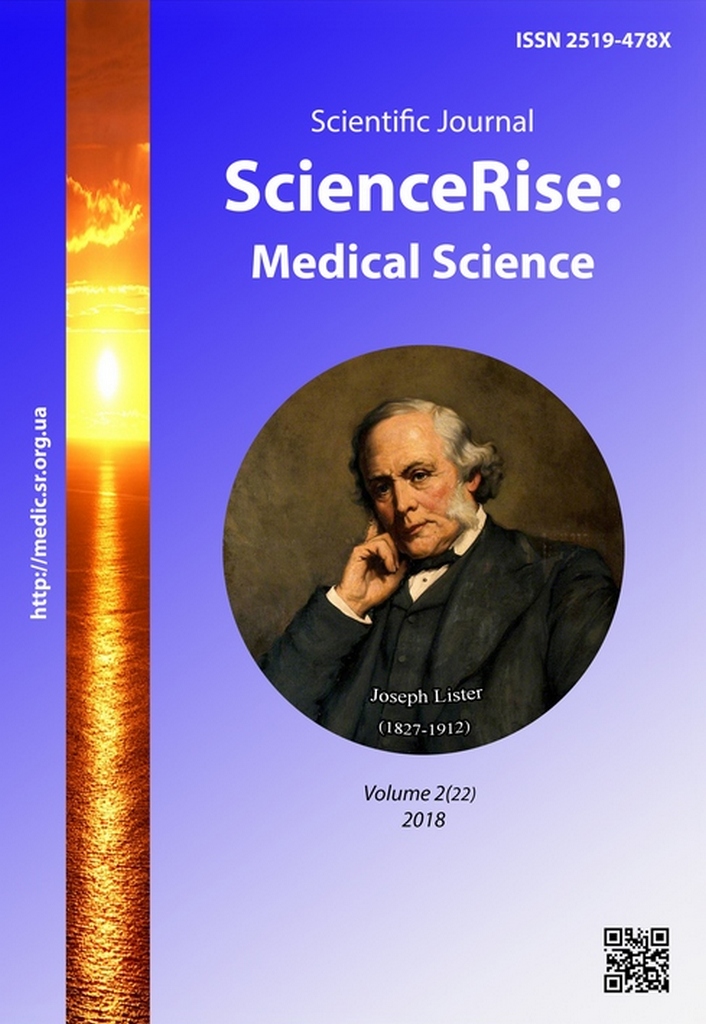Assessment of quality of life in patients with myasthenia
DOI:
https://doi.org/10.15587/2519-4798.2018.124132Keywords:
myasthenia, quality of life, antibodies to acetylcholine receptors, antibodies to muscle-specific tyrosine kinaseAbstract
Aim: to study the quality of life in adult patients with myasthenia, depending on the immunological subtype and the clinical form of the disease.
Methods: 96 patients (56 women and 40 men) with myasthenia (71 with generalized, 25 with an ophthalmologic form, respectively) underwent in-depth clinical and neurological, immunological examination tests on MGQoL-15 scale.
Results: When evaluated on the MGQoL-15 scale, the average quality of life was 10.34 ± 9.4 points (in ranging from 0 to 31). In patients with ophthalmic myasthenia (class I by MGFA), the quality of life is significantly higher in comparison with patients with generalized form (p<0.05). In the generalized form, quality of life indicators are significantly reduced with increasing severity of the disease (from class II to class IV by classification of MGFA, p<0.05). The level of quality of life does not depend on the detection of antibodies to acetylcholine receptors, antibodies to muscle-specific tyrosine kinase or their absence (p>0.05).
Conclusions: The quality of life of patients with myasthenia depends on the severity of the disease and does not depend on the immunological subtype of the disease. The highest indicators of quality of life are observed in patients with ocular form of myasthenia, which is explained by the lesser influence of neurological manifestations of the disease on everyday life, habits, work of patients. Reducing the severity of manifestations of myasthenia leads to an improvement in the quality of life of patients
References
- Kulikova, S. L. (2014). Antitela k atsetilholinovyim retseptoram v diagnostike razlichnyih form miastenii. Nevrologiya i neyrohirurgiya Vostochnaya Evropa, 1 (21), 73–82.
- Skeie, G. O., Apostolski, S., Evoli, A., Gilhus, N. E., Illa, I., Harms, L.et. al. (2010). Guidelines for treatment of autoimmune neuromuscular transmission disorders. European Journal of Neurology, 17 (7), 893–902. doi: 10.1111/j.1468-1331.2010.03019.x
- Shkolnik, V. M., Kalbus, A. I., Baranenko, A. N., Pogorelov, A. V. (2014). Miasteniya: sovremennyie podhodyi k diagnostike i lecheniyu. Ukrainskyi nevrolohichnyi zhurnal, 2, 12–17.
- Shkolnik, V. M., Kalbus, A. I., Shulga, O. D. (2010). Miasteniya: chto nam izvestno segodnya? Zdorovia Ukrainy (nevrolohiia, psykhiatriia, psykhoterapiya), 3 (14), 10–11.
- Shulga, O. D., Kalbus, A. I., Shulga, L. A. (2010). Miasteniya. Neyron Revyu, 2, 13–20.
- Kulaksizoglu, I. B. (2007). Mood and Anxiety Disorders in Patients with Myasthenia Gravis. CNS Drugs, 21 (6), 473–481. doi: 10.2165/00023210-200721060-00004
- Aysal, F., Karamustafalioğlu, O., Özçelik, B. et. al. (2013). The relationship of symptoms of anxiety and depression with disease severity and treatment modality in myasthenia gravis: a cross-sectional study. Archives of Neuropsychiatry, 50 (4), 295–300. doi: 10.4274/npa.y5611
- Uyaroğlu F. G., Bilgin S., Keleş E. H., Zorlu Y. (2016). Anxiety And Depression Symptoms In Patients With Generalized Myasthenia Gravis. The Journal of Tepecik Education and Research Hospital, 26 (2), 97–103. doi: 10.5222/terh.2016.097
- Suzuki, Y., Utsugisawa, K., Suzuki, S., Nagane, Y., Masuda, M., Kabasawa, C. et. al. (2011). Factors associated with depressive state in patients with myasthenia gravis: a multicentre cross-sectional study. BMJ Open, 1 (2), e000313–e000313. doi: 10.1136/bmjopen-2011-000313
- Blum, S., Lee, D., Gillis, D., McEniery, D. F., Reddel, S., McCombe, P. (2015). Clinical features and impact of myasthenia gravis disease in Australian patients. Journal of Clinical Neuroscience, 22 (7), 1164–1169. doi: 10.1016/j.jocn.2015.01.022
- Kulkantrakorn, K., Sawanyawisuth, K., Tiamkao, S. (2010). Factors correlating quality of life in patients with myasthenia gravis. Neurological Sciences, 31 (5), 571–573. doi: 10.1007/s10072-010-0285-6
- Padua, L., Evoli, A., Aprile, I., Caliandro, P., Mazza, S., Padua, R., Tonali, P. (2001). Health-related quality of life in patients with myasthenia gravis and the relationship between patient-oriented assessment and conventional measurements. Neurological Sciences, 22 (5), 363–369. doi: 10.1007/s100720100066
- Yang, Y., Zhang, M., Guo, J., Ma, S., Fan, L., Wang, X. et. al. (2015). Quality of life in 188 patients with myasthenia gravis in China. International Journal of Neuroscience, 126 (5), 455–462. doi: 10.3109/00207454.2015.1038712
- Oliveira, E. F., Nacif, S. R., Urbano, J. J., Silva, A. S., Oliveira, C. S., Perez, E. A. et. al. (2017). Sleep, lung function, and quality of life in patients with myasthenia gravis: A cross-sectional study. Neuromuscular Disorders, 27 (2), 120–127. doi: 10.1016/j.nmd.2016.11.015
Downloads
Published
How to Cite
Issue
Section
License
Copyright (c) 2018 Oleksandr Kalbus

This work is licensed under a Creative Commons Attribution 4.0 International License.
Our journal abides by the Creative Commons CC BY copyright rights and permissions for open access journals.
Authors, who are published in this journal, agree to the following conditions:
1. The authors reserve the right to authorship of the work and pass the first publication right of this work to the journal under the terms of a Creative Commons CC BY, which allows others to freely distribute the published research with the obligatory reference to the authors of the original work and the first publication of the work in this journal.
2. The authors have the right to conclude separate supplement agreements that relate to non-exclusive work distribution in the form in which it has been published by the journal (for example, to upload the work to the online storage of the journal or publish it as part of a monograph), provided that the reference to the first publication of the work in this journal is included.









